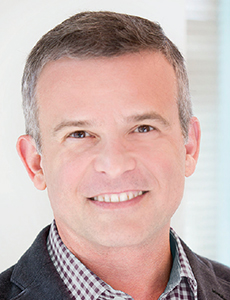Warning: What You Know About Cannabis May Actually Be Wrong

With Canada now officially the Land of Legal Cannabis, the U.S. is likely not far behind. Currently, recreational cannabis is legal in nine U.S. states plus Washington, DC, and 30 states have medical marijuana laws in place. The time for taking a wait-and-see approach has passed.
Employers, insurers and professionals across the workers’ comp industry need an informed and thoughtful approach to employees’ use of cannabis and its potential impact on workplace safety and workers’ comp claims.
But getting accurate information is a challenge. One major reason is that cannabis cultivation has changed in recent years, resulting in a product that’s significantly different from what past researchers based their conclusions on.
“Take just the THC component of marijuana,” said Marcos Iglesias, senior vice president and chief medical officer, Broadspire. “In the 1990s, we were dealing with concentrations of 3 to 4 percent. Today we’re dealing with concentrations of 20 to 30
percent. How do you apply [existing research] when you have studies that are 10 years old or even 20 years old? It’s a different drug altogether.”
The internet can provide a virtually endless supply of information about cannabis. But it can be difficult to discern how much of it is false, misleading or conflicting. Misinformation is spread from source to source, creating a perception of fact. Even experts speaking in professional forums often don’t have a thorough grasp of the facts, said Iglesias.
“Some of the misconceptions include ‘medical and recreational marijuana are 2 different products.’ They’re not. ‘CBD is legal.’ ‘Cannabis addiction is rare.’ On a lot of these things, I think we need to have a frank and evidence-based conversation as opposed to ‘I read somewhere …’ or ‘I heard somewhere …’ ” he said.
Iglesias said he will be unpacking several of these misconceptions at the National Workers’ Compensation and Disability Conference in Las Vegas in December, at a session entitled “Marijuana, Workers’ Compensation and Disability: What’s the Science and the Law?” Iglesias will address the scientific side of the issue, while attorney Stuart Colburn, shareholder with Downs Stanford, will address the legal and regulatory side of it.
“In the 1990s, we were dealing with concentrations of 3 to 4 percent. Today we’re dealing with concentrations of 20 to 30 percent. How do you apply [existing research] when you have studies that are 10 years old or even 20 years old? It’s a different drug altogether.” — Marcos Iglesias, senior vice president and chief medical officer, Broadspire
“This is the unknown, and everything is in conflict,” said Colburn.
“Federal law says you are not allowed to pay for marijuana or use marijuana. And yet we have 6 states that require an insurance company to pay for or reimburse an injured worker for marijuana. How do we resolve that conflict for an employer and an insurance company?”
Employers and payers in staunchly anti-cannabis states may not be able to stay out of the fray much longer. Consider that a few months prior to the passage of Canada’s legal cannabis law, 68 percent of Canadians favored legalization. Currently, 64 percent of Americans support legalization according to a Gallup poll.
“We have probably passed the tipping point here in the U.S. that marijuana is being accepted,” said Colburn. “[Legal recreational use laws] are now passing, not just blue states but they’re even passing in red states.”
Iglesias said his goal for the NWCDC presentation is to help people get a better handle on the facts and issues, so that they can make better informed decisions about how to approach the road ahead.
“What I’m trying to do is focus people on what is it that we actually do know … what don’t we know, what are the gaps that we need to fill so that we can have a better understanding and develop better policy.” &











